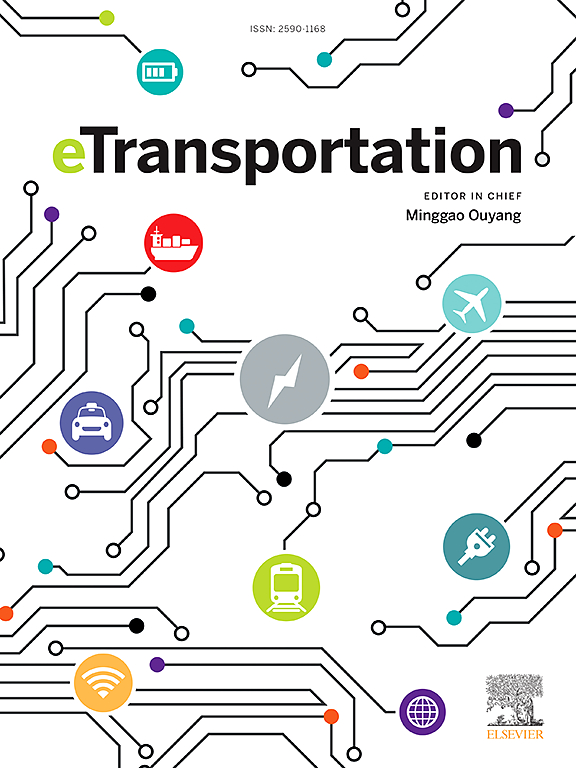低压电化学氢气压缩机膜电极组合研究进展
IF 17
1区 工程技术
Q1 ENERGY & FUELS
引用次数: 0
摘要
氢燃料电池汽车(fcv)的广泛使用有助于减少交通运输对传统化石燃料的依赖,具有显著的环境效益和大规模应用的潜力。然而,氢的净化和储存是氢能广泛应用的迫切需要解决的问题。电化学氢气压缩机(EHC)可以在压缩氢气的同时净化氢气,具有许多优点,可以满足燃料电池汽车对氢气的特定要求。同时,随着工业氢气净化需求的增加和天然气管道混氢的推广,低压(<5 MPa) EHC系统的应用有望显著扩大。本文详细介绍了EHC的工作原理和结构,并比较了其与传统氢气压缩机的优缺点。针对低压EHC系统应用中的实际挑战,综述了质子交换膜、气体扩散层、催化剂层等关键部件的研究进展。此外,它回顾了水管理和减轻膜电极组件内中毒的策略。最后,总结了低压EHC系统面临的挑战,并对未来的研究方向进行了展望。本文章由计算机程序翻译,如有差异,请以英文原文为准。

Research progress on membrane electrode assembly for low-pressure electrochemical hydrogen compressors
The widespread use of hydrogen fuel cell vehicles (FCVs) is beneficial for reducing transportation's reliance on traditional fossil fuels, providing significant environmental benefits and potential for large-scale application. However, the purification and storage of hydrogen are pressing issues that need to be addressed for the widespread application of hydrogen energy. The electrochemical hydrogen compressor (EHC) can purify hydrogen while compressing it, offering numerous advantages and meeting the specific requirements of FCVs for hydrogen. Meanwhile, with the increasing necessity for industrial hydrogen purification and the promotion of hydrogen mixed in natural gas pipeline, the application of low-pressure (<5 MPa) EHC system is expected to expand significantly. This paper provides a detailed introduction to the working principles and structures of EHC, comparing their advantages and disadvantages with traditional hydrogen compressors. To address the practical challenges in the application of the low-pressure EHC system, this paper summarizes the research progress on key components such as proton exchange membranes, gas diffusion layers, and catalyst layers. Additionally, it reviews strategies for water management and the mitigation of poisoning within the membrane electrode assembly. Finally, it summarizes the challenges that the low-pressure EHC system is facing and offers prospects for future research directions.
求助全文
通过发布文献求助,成功后即可免费获取论文全文。
去求助
来源期刊

Etransportation
Engineering-Automotive Engineering
CiteScore
19.80
自引率
12.60%
发文量
57
审稿时长
39 days
期刊介绍:
eTransportation is a scholarly journal that aims to advance knowledge in the field of electric transportation. It focuses on all modes of transportation that utilize electricity as their primary source of energy, including electric vehicles, trains, ships, and aircraft. The journal covers all stages of research, development, and testing of new technologies, systems, and devices related to electrical transportation.
The journal welcomes the use of simulation and analysis tools at the system, transport, or device level. Its primary emphasis is on the study of the electrical and electronic aspects of transportation systems. However, it also considers research on mechanical parts or subsystems of vehicles if there is a clear interaction with electrical or electronic equipment.
Please note that this journal excludes other aspects such as sociological, political, regulatory, or environmental factors from its scope.
 求助内容:
求助内容: 应助结果提醒方式:
应助结果提醒方式:


